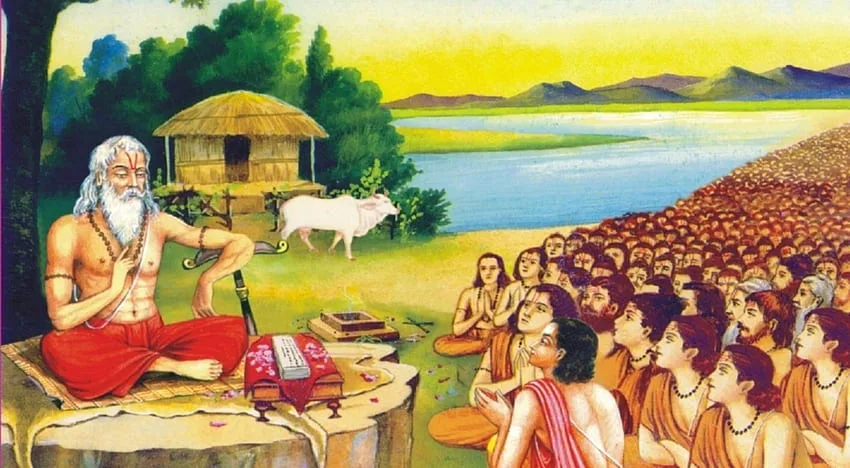Welcome to a thought-provoking exploration of the challenges faced by the LGBTQ+ community in the face of stigma and discrimination when it is none of their fault. We all know that it is not by choice that one’s orientation is determined. The orientation takes shape in the womb, far from the knowledge of the fetus taking shape, yet there persists an unfortunate stigma surrounding LGBTQ+ identities, particularly those associated with different sexual orientations.
In a world brimming with the kaleidoscope of human identities, embracing diversity stands as a paramount virtue that propels us toward a more inclusive and understanding society. It is quite disheartening to witness the lingering prejudice and misconceptions surrounding individuals who identify as gay or as part of the LGBTQ+ spectrum. This blog seeks to shed light on the unfortunate stigma that persists while also celebrating the rich tapestry of identities and experiences within the LGBTQ+ community.
Together, we will delve into the intricacies of understanding and accepting the inherent nature of being gay, emphasizing that it is not a choice but rather an essential aspect of the diverse spectrum of human existence. the complexities of societal attitudes, the struggles faced by individuals, and the profound importance of fostering acceptance and respect. Join us as we embark on a journey of empathy, education, and advocacy, aiming to create a more compassionate and inclusive world where every individual is celebrated for their unique identity. Let’s unravel the layers of misconception and prejudice as we navigate the path toward a more compassionate and enlightened understanding of LGBTQ+ identities.

The Unchosen Path: Navigating the Innate Nature of Sexual Orientation
The realization of being gay often unfolds as an unchosen journey, shaped by the profound intricacies of one’s authentic self. This exploration delves into the heart of this path, aiming to understand the concept of sexual orientation as an innate aspect of identity while simultaneously shedding light on the challenges and societal pressures that individuals face when they embark on the unchosen journey of realizing they are gay.
1. Sexual Orientation as an Integral Identity Component
Sexual orientation, an intricate facet of human diversity, is increasingly understood as an innate characteristic woven into the fabric of one’s identity. It is not a matter of choice but a fundamental aspect of who individuals are. Research from diverse fields, including psychology, biology, and neuroscience, consistently supports the understanding that being gay is not a conscious decision but a natural variation in human sexuality.
It is crucial to acknowledge that an individual’s sexual orientation, including being gay, is not a choice; rather, it takes shape long before any conscious awareness, during the intricate development of the fetus in the womb. Despite this inherent and natural aspect of human diversity, it is disheartening that there continues to be an unfortunate stigma surrounding LGBTQ+ identities, particularly those associated with different sexual orientations.
This stigma often leads to discrimination, prejudice, and misconceptions, creating unnecessary barriers for individuals to embrace their true selves and be fully accepted by society. It is imperative for us to promote understanding, empathy, and inclusivity and to challenge the negative perceptions that perpetuate this stigma. By fostering a culture of acceptance and respect, we can create a world where every individual feels valued and free to express their authentic identity without fear of judgment or discrimination.
2. Challenges and Societal Pressures
Embarking on the unchosen path of realizing one’s homosexuality comes with its own set of challenges, intricately interwoven with societal expectations and norms. Individuals grappling with their sexual orientation often face internal struggles, questioning and navigating their identity within the context of societal norms.
Societal pressures, ranging from family expectations to cultural norms, can cast a shadow on the journey of self-discovery. The fear of rejection, discrimination, and isolation can be profound, leading individuals to grapple with mental health challenges, anxiety, and a sense of alienation. The burden of societal expectations can be particularly heavy, as heteronormative standards may not readily accommodate the authenticity of diverse sexual orientations.
The unchosen path, while marked with internal growth and self-acceptance, is also a journey of resilience. LGBTQ+ individuals often find themselves forging bonds of solidarity, drawing strength from shared experiences, and becoming advocates for broader societal understanding and acceptance.
In navigating the unchosen path, society must recognize the courage and authenticity required to embrace one’s true self. By fostering environments of acceptance and understanding, we contribute to a world where individuals can embark on their unique journeys without the weight of societal pressures, ultimately enriching the human experience through the celebration of diversity.
The Fallacy of Choice: No one wants to be a ‘HOMO’ by choice
To dispel the misconception that being gay is a lifestyle choice, it is essential to share personal stories and testimonials that provide a window into the struggles faced by individuals navigating societal expectations. These narratives not only highlight the emotional toll but also foster understanding and empathy. Here are some compelling stories that underscore the challenges of living in a world that may misunderstand or stigmatize those who identify as gay.
Voices of Resilience: Navigating Society’s Expectations
- Mark’s Story: Breaking Free from Expectations
Mark, a 30-year-old professional, shares his journey of self-discovery in a society that often imposes rigid expectations. Growing up, Mark felt the weight of societal norms, struggling to reconcile his authentic self with the expectations placed upon him. He recounts the emotional toll of suppressing his true identity to conform to heteronormative ideals. Mark’s story sheds light on the internal conflict faced by many, emphasizing that being gay is not a choice but a fundamental aspect of his identity.
- Jennifer’s Journey: A Mother’s Perspective
Jennifer, a supportive mother, shares her experience of witnessing her son’s struggles with societal expectations. She reflects on the emotional journey of acceptance, recounting moments of pain and resilience as her son faced judgment and misunderstanding. Through Jennifer’s lens, readers gain insight into the profound impact of societal pressure on individuals and their families, emphasizing the importance of empathy and open-mindedness.
- Alex’s Triumph: From Stigma to Self-Love
Alex, a young activist, bravely shares his triumph over societal expectations and self-stigma. He vividly recounts the challenges he faced, from internalized shame to external discrimination. Alex’s story is one of resilience and self-love, demonstrating the transformative power of acceptance. His journey inspires others to embrace their authentic selves and challenges the notion that being gay is anything other than a genuine expression of one’s identity.
These stories exemplify the diverse experiences of individuals navigating societal expectations related to sexual orientation. By sharing these narratives, we aim to dispel misconceptions, foster understanding, and encourage a more compassionate and accepting society. It is crucial to recognize that the emotional toll of living in a world that may misunderstand or stigmatize those who identify as gay underscores the need for empathy, education, and open dialogue to break down barriers and build a more inclusive future.

The Pain of Rejection: Heteronormativity and Discrimination
Heteronormativity, the societal assumption that heterosexuality is the norm, remains deeply ingrained in various aspects of our culture. This normative lens not only perpetuates biases but also contributes significantly to the discrimination faced by the LGBTQ+ community. To build a more inclusive and compassionate world, it is crucial to examine both overt and subtle instances of discrimination while emphasizing the importance of dismantling the societal norms that sustain bias.
1. Overt Discrimination: Visible Manifestations of Bias
Overt discrimination against the LGBTQ+ community is often blatant and easily recognizable. Instances include discriminatory laws, hate crimes, and overtly derogatory language. In some places, individuals may face legal consequences solely based on their sexual orientation or gender identity, reinforcing a systemic bias. Hate crimes, ranging from verbal abuse to physical violence, create an atmosphere of fear and exclusion, perpetuating a cycle of discrimination.
2. Subtle Discrimination: The Insidious Impact
While overt discrimination is conspicuous, subtle forms of bias can be equally damaging. Microaggressions, derogatory comments, or exclusionary language in everyday interactions contribute to a hostile environment for LGBTQ+ individuals. Additionally, the lack of representation in media, inadequate LGBTQ+ education, and workplace discrimination contribute to the normalization of heteronormativity. These subtler forms of discrimination can erode the mental health and well-being of individuals who face them regularly.
3. Societal Norms: The Root of Bias
The impact of discrimination is deeply rooted in societal norms that prioritize heterosexuality. From family structures to educational curricula, heteronormative ideals are embedded in various institutions. The assumption that everyone is heterosexual until proven otherwise marginalizes LGBTQ+ individuals, reinforcing a sense of otherness. Dismantling these norms involves challenging deeply ingrained beliefs and advocating for inclusive policies that acknowledge and embrace diverse sexual orientations and gender identities.
4. Understanding the Impact of Rejection
Discrimination based on heteronormativity has profound effects on the mental health and well-being of LGBTQ+ individuals. Rejection from family, peers, or society at large can lead to anxiety, depression, and a heightened risk of self-harm or suicide. Understanding the impact of rejection is paramount to creating a more compassionate world. It necessitates not only challenging discriminatory practices but also fostering environments that celebrate diversity and provide support systems for those who face rejection.
Towards Inclusivity: Dismantling Heteronormativity
To build a more inclusive and compassionate world, dismantling heteronormativity is crucial. This involves challenging discriminatory practices, advocating for legal protections, and promoting comprehensive LGBTQ+ education. By fostering understanding and empathy, we can create a society that embraces diversity and celebrates the richness of all identities. It is through collective effort and a commitment to dismantling harmful norms that we pave the way toward a world where discrimination based on sexual orientation and gender identity becomes a relic of the past.
Global Perspectives: Unacceptance Worldwide
The acceptance and legal recognition of LGBTQ+ rights vary significantly across the globe, painting a diverse landscape that underscores the challenges faced by the LGBTQ+ community on a global scale. Let’s examine specific cases and statistics that provide insight into the importance of advocating for equal rights and fostering respect for all individuals, regardless of sexual orientation.
1. Progressive Paradigms: Advances in LGBTQ+ Rights
Countries like Canada, the Netherlands, and Sweden have made significant strides in recognizing and protecting LGBTQ+ rights. Canada, for instance, legalized same-sex marriage in 2005, setting an example for inclusivity. The Netherlands, known for its early adoption of LGBTQ+ rights, demonstrates the positive impact of societal acceptance and legal recognition. Sweden, consistently ranking high in LGBTQ+ rights indices, showcases the positive outcomes of inclusive policies.
2. Uphill Battles: Struggles in LGBTQ+ Acceptance
In contrast, there are countries where LGBTQ+ individuals face severe challenges. In some parts of Africa, the Middle East, and Asia, discriminatory laws and societal attitudes create hostile environments. Specific cases highlight the struggles faced by LGBTQ+ individuals, such as the criminalization of same-sex relationships, a lack of legal protections, and social ostracization. These challenges underscore the urgent need for advocacy to promote understanding and inclusivity.
3. Legal Frameworks: A Patchwork of Protections
Legal recognition of LGBTQ+ rights varies widely. While some countries have comprehensive anti-discrimination laws and recognize same-sex relationships, others lack fundamental legal protections. In countries where homosexuality is criminalized, individuals face not only societal stigma but also the constant threat of legal repercussions. Understanding these legal frameworks is crucial in advocating for the establishment of protective measures on a global scale.
4. Cultural and Religious Influences: Shaping Attitudes
Cultural and religious influences play a significant role in shaping societal attitudes toward LGBTQ+ individuals. Countries with conservative cultural or religious norms may exhibit lower acceptance levels, leading to increased discrimination. Understanding the intersectionality of culture, religion, and LGBTQ+ rights is essential in formulating strategies that promote inclusivity while respecting diverse belief systems.
5. Transgender Rights: A Global Challenge
Transgender rights face particular challenges worldwide. Many countries lack specific legal protections for transgender individuals, leading to discrimination, violence, and limited access to healthcare. Highlighting the struggles faced by the transgender community underscores the importance of addressing the unique challenges they encounter globally.

Breaking Down Stereotypes: Dispelling Myths about Homosexuality
Stereotypes surrounding homosexuality persist in society, often rooted in ignorance, misinformation, or outdated beliefs. It is essential to challenge these stereotypes and replace them with accurate information to foster understanding and acceptance. In this section, we will address common myths about homosexuality and provide factual insights to dispel these misconceptions.
1. Myth: Homosexuality is a Choice
Reality: Scientific Consensus on Innate Orientation
Contrary to the belief that individuals choose their sexual orientation, scientific evidence overwhelmingly supports the idea that being gay is not a choice. Numerous studies indicate a strong biological and genetic basis for sexual orientation. Accepting one’s homosexuality is an acknowledgment of one’s authentic self rather than a lifestyle decision.
2. Myth: Homosexuality is a Mental Disorder
Reality: Declassified by Major Psychiatric Associations
Historically, homosexuality was wrongly classified as a mental disorder. However, major psychiatric associations, including the American Psychiatric Association and the World Health Organization, have declassified homosexuality as a mental disorder. Being gay is a natural variation of human sexuality, not a psychological condition.
3. Myth: Homosexuals are More Likely to be Pedophiles
Reality: No Correlation Between Sexual Orientation and Pedophilia
One of the most harmful myths is the unfounded association between homosexuality and pedophilia. Research consistently shows no correlation between sexual orientation and an increased likelihood of engaging in pedophilic behavior. Such stereotypes contribute to unwarranted prejudice and discrimination.
4. Myth: Homosexuality is Against Nature or Unnatural
Reality: Homosexuality is Observed in Nature
Homosexuality is observed in numerous species across the animal kingdom, challenging the notion that it is unnatural. In humans, diverse sexual orientations have existed throughout history and across cultures. Understanding the natural diversity of sexual orientation promotes inclusivity and dispels the myth that homosexuality is against nature.
5. Myth: All Gay Men are Effeminate, and all lesbians are Masculine
Reality: Diverse Expressions of Gender Identity
Homosexual individuals, like their heterosexual counterparts, exhibit a wide range of expressions of gender identity and presentation. Stereotyping gay men as effeminate and lesbians as masculine oversimplifies the rich diversity of personalities and identities within the LGBTQ+ community.
6. Myth: Homosexual Relationships are Less Stable or Committed
Reality: Commitment is Independent of Sexual Orientation
Research consistently demonstrates that the stability and commitment in relationships are not determined by sexual orientation. Like heterosexual relationships, the success of a partnership depends on factors such as communication, compatibility, and mutual respect.
Promoting Understanding for a Diverse Society
Breaking down stereotypes about homosexuality involves challenging preconceived notions and embracing the diversity of the human experience. By dispelling these myths, we foster a more inclusive society that recognizes and respects individuals for who they are, irrespective of their sexual orientation. Education, open dialogue, and empathy are essential tools in dismantling stereotypes and building a world where everyone can live authentically and without fear of judgment.
Conclusion
As we conclude our exploration into the diverse landscapes of LGBTQ+ identities and the challenges faced, it becomes evident that empathy and acceptance are the cornerstones of building a more inclusive world. The journey we’ve undertaken to dispel stereotypes, understand the inherent nature of sexual orientation, and witness the global struggles for acceptance underscores the imperative of embracing diversity.
In our collective pursuit of a more compassionate society, it is crucial to reiterate the significance of empathy. Understanding the experiences of the LGBTQ+ community, acknowledging the authenticity of diverse identities, and respecting the inherent nature of sexual orientations contribute to the tapestry of human understanding.
Readers are encouraged to go beyond mere understanding and actively foster a more inclusive and supportive environment for the LGBTQ+ community. By challenging stereotypes, advocating for equal rights, and promoting open dialogue, individuals can play a vital role in breaking down the barriers that persist. It is through small acts of kindness, understanding, and allyship that we contribute to creating safe spaces where everyone can thrive as their authentic selves.
Emphasizing that embracing diversity benefits society as a whole is a call to recognize the interconnectedness of humanity. A society that values and respects all its members, regardless of sexual orientation, thrives on the richness of its diversity. When individuals are free to express their authentic selves without fear of discrimination, the entire community benefits from the wealth of perspectives, talents, and experiences.
In essence, the journey toward empathy, acceptance, and embracing diversity is not just a path of understanding the LGBTQ+ community; it is a journey toward creating a better world for everyone. As we navigate the complexities of our diverse world, let us commit to fostering an environment where love, acceptance, and respect triumph over prejudice and discrimination. In doing so, we contribute to a society that celebrates the uniqueness of each individual, recognizing that true strength lies in our unity and shared humanity.
Note: Contact our Writers at www.eastsidewriters.com for writing Blogs/Articles on any niche. We have experts in various domains, from Technology to Finance and from Spirituality to Lifestyle and Entertainment.







Pingback: What makes nudity commonplace in Greek society, yet so meticulous in Indian culture? - Eastside Writers